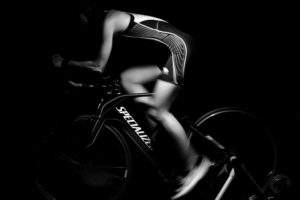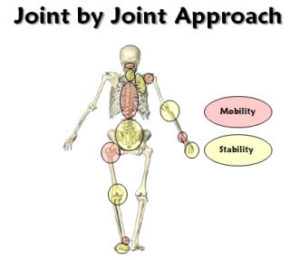You will learn:
- What to stretch and why
- When not to stretch
- What to do post-workout
Fitness should be a fun experience. But how many times have you shown up to class without a proper warm up, or ‘wing it’ with a few stretches you remember from high school and hop into the workout?
How did you feel during and after? Probably fine…for a while.
Younger athletes have the advantage of owning soft tissues (muscles, ligaments, tendons) that haven’t been burdened by a lifetime of work, stress and home life. The older we get, we tend to lose our relative flexibility and wake up one day at 35 and say, ‘I’m stiff!’.
So, how do you prepare your body for a fitness class (spin, HIIT, bar, barbell)? The solution is to focus on stretching areas that need to be addressed while leaving those other areas alone that don’t need to be stretched.
What to Stretch and Why?
To keep the science light, let’s look at the body as a set of hinge points.
For the body to work in harmony, regardless of work, fitness or home life, we need these areas of mobility and stability to support each other. We want to have both here: mobility to move, and stability to support the mobility. You can’t stand and balance on one foot if your foot is not stable first, right?
Typically, we want stability in: Foot, Knee, Low Back, Upper Back, Shoulder Blade, Elbow, Hand.
We want mobility in: Ankle, Hip, Mid-Low Thoracic Spine, Mid-Neck, Shoulder Joint (glenohumeral), Wrist.
Huh?
The premise is that there are certain areas of our body that need to remain stiff and stable for our protection, while other areas (above and below) need to be flexible and mobile.
i.e. mobile ankle (below)…stable knee…mobile hip (above)
We run into trouble when ‘life happens’ to us. We sit for work, slouch, round our upper backs, look at our phones constantly – all these things negatively impact our once pristine posture. These postural concerns can creep into our workouts too; but don’t worry, we can get it back.
What happens is that if we let things go for too long, unaddressed, the body begins to accommodate. The body responds to what ‘it thinks that you want’. For example, if you are learning to play the guitar, your fingers will be painful until you build up calluses. You didn’t have to ‘tell’ your body to do this, it did it on it’s own because the body recognized a new stressor to the body – and accommodates – thicker skin for longer playing time – here you go.
An real-world example would be someone who suffers from lower back pain while cycling. Now, we said the lower back needs to be stiff and stable. Because this person might have stiffness into their mid-lower thoracic spine and stiffness into their hips (remember, these should remain mobile areas of the body), this person needs to stretch their hips and mid back and NOT stretch the lower back. Make sense?
So, for this person, their once-stable low back has shaken loose (maybe due to a lifetime of poor posture or an injury at some point) and the hips and mid-low thoracic spine have stiffened up in order to compensate. Trouble is, this is not how the body was engineered to work and what happens is when you do try to do something routine, your body cannot accommodate because those key mobile-stable parts of the body have switched roles.
Another practical example would be ‘tight hamstrings’. Hamstring tightness is usually a compensation for other muscles not working in concert with each other. Typically, it is a response – accommodation – to tightness into the quadriceps (front thighs) and weakness into the glute muscles. For this person, stretching the quads, strengthening the glutes AND hamstrings would be the way to go. I wouldn’t recommend stretching the hamstrings for this person.
Because many of us find ourselves sitting all day, every day, our bodies begin to accommodate to those postures and positions. As a result, muscles lengthen and become weakened – these would be muscle that typically do not need to be stretched.
Ah, but “why are they ‘tight’ and cause me pain, then?” you might be asking yourself.
Great question.
When Not To Stretch
This happens because over time, the muscles lengthen and will continue to do so, protesting all along the way. We typically ignore this and as a result, the muscles ‘tighten’ as a defense mechanism to prevent further lengthening.
An example would be: imagine you are on a gravelly slope holding onto a rope that is attached to a weighted object. For a while, you can shift your posture and hold it steady. But as the day wears on, you will begin to fatigue and ‘tighten’ your grip on that rope and screw in your feet to maintain your purchase only to find the object to feel progressively heavier as you fatigue. Eventually, you run out of gas as your muscles scream in protest. This is what the body does for us, it elicits pain because pain is a request for change. This is why we get up and move around if we sit for work – it feels good and the body appreciates a break from holding that rope.
Now, am I against stretching these muscles at all? No. If it feels good to shake out the rust, that is fine, but you MUST compliment those short stretching sessions with longer ones for the muscles that truly need them.
This will be covered in future posts with location-specific parts of the body.
What To Do Post-Workout?
Now that your fitness class is over what do you do? Well, first congratulate your fellow classmates and coach for a class well done and hydrate. Food can happen later, but let’s stay hydrated. Sip, don’t guzzle.
The muscles that you have worked out the most will need the most attention. They are engorged with blood and nutrients from the workout – but also metabolic waste that naturally builds up with fitness. Since it needs some place to go, move. Walk around a little and gently stretch the muscles – you don’t need to go full-bore here because they are still pliable and elastic from your workout.
What About Painful Muscles, Post Workout?
Resist the temptation to overstretch an area that might have ‘acted up’ during your workout. This ‘cramping or tightness’ is a sign that the muscle needs help, so gentle hand massage, or lacrosse ball work is a good jumping in point. Remember, less is more as the tissue is already guarded.
What About Post Post-Workout Soreness?
You can return to stretching, foam rolling or lacrosse-balling these areas as needed but remember that less is still more. Resist the temptation to sit on and squash those sore muscles if you are able. If not, a quick mobility routine before bed will liven up those tissues so that your body can more efficiently heal and repair them as you sleep.
Conclusion
The body is a fantastic and frustrating machine. It needs a combination of mobility and flexibility to function. Often, through life, we develop compensation patterns as our body accommodates to whatever we do most: sit, stand, slouch, repetitive movements, etc.
The compensation patterns are usually a mobile joint begins to stiffen up as a stable joint becomes mobile to compensate to the compensation (i.e. knee pain coming from stiff ankles and stiff hips).
Mobilize tissues that you will be working out that day and do the bare minimum to those muscles that will not play a key role in your workout (i.e. more to the quads, less to the hamstrings).
Stay hydrated and move around after a workout, fuel up and add in mobility later in the day. Especially if you are someone who sits for work after working out. Mini-stretch routines to ‘dust off’ the muscles before bed is for those who want extra credit 🙂
And until next time,
Stay Healthy
-Doc Erik-


